1995 Jaguar XJS 4.0 vs. 2000 Jaguar XK8 X100
The XK8 which replaced the XJS in 1996 was a very different beast indeed. We compare a 4.0-litre example of each to discover which we prefer today.
TWIN TEST: XJS v XK8
So similar and yet so different, the XK8 meets the car it was partly based on. Just don’t mention the DB7.
Although one directly followed the other, the XJS and XK8 have as much in common as a popular dairy product does with a soft, white and porous rock. While one has hard, angular lines and powered by a range of relatively ancient engines, the other features rounder, more voluptuous curves plus a much more modern unit. They’re so unalike it’s like they came from totally different eras and not years.
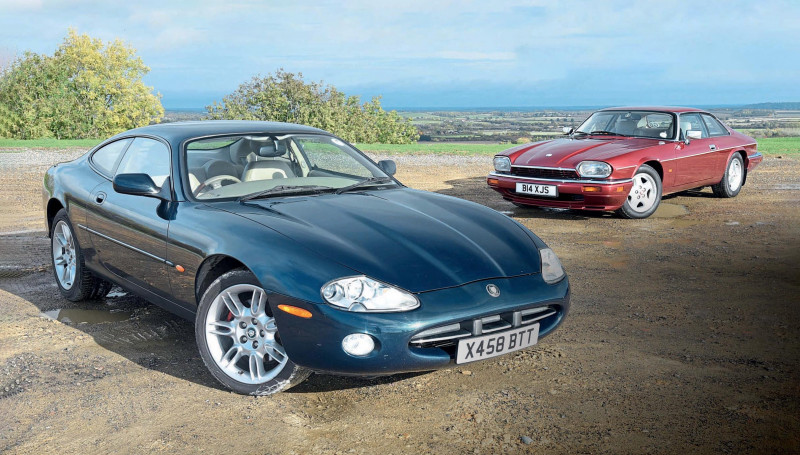
But thanks to the XJS lasting a massive 21 years meaning its development started in the late Sixties, that’s because they did. Although the car had been updated and facelifted several times in that time there was no hiding its age and even at the end of production in 1996 it was still a car from the Seventies.
The XK8, meanwhile, was mostly new. Despite its design harking back to the past, the car looked forward to the future and in terms of performance, engineering and tech it was very much aimed at the coming millennium and beyond. The result was two very different cars which other than their badges, had little in common.

Over the two decades since the XK8 replaced the XJS which do we think is the best choice?
If things had worked out like Jaguar had initially planned, then we wouldn’t be doing this test. The XJ-S was meant to be replaced by a new, more curvaceous sports car in the late Eighties that was designed by designer and JW columnist, Keith Helfet and codenamed the XJ41.
Helfet spent ten years on the car but despite several running prototypes being built, with an overly complicated specification resulting in increased costs, Ford pulled the plug on the project when the American giant took over Jaguar in 1989.
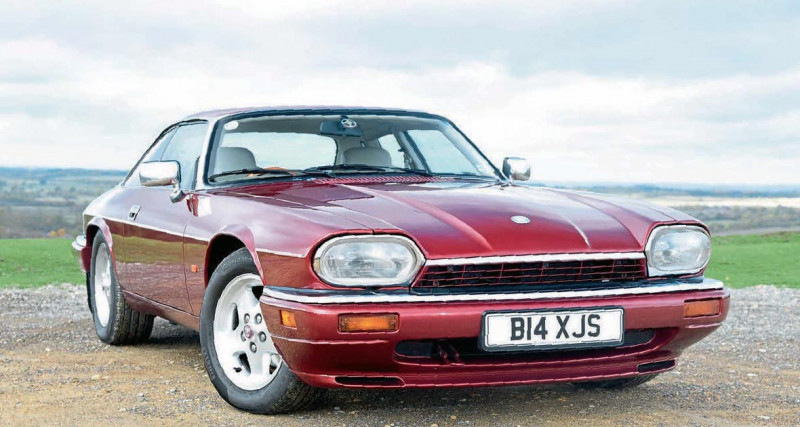
“I was distraught, I was absolutely gutted,” Keith told me during an interview in the October 2018 issue about the car. “It had all gone so sour and I was really upset about it”
Yet the design didn’t go to waste; after Keith later realised the body would fit directly onto the XJ-S chassis, the car was reborn as a low volume model produced by JaguarSport at the same Bloxham-based facility as the XJ220 (another Keith Helfet design) had been.
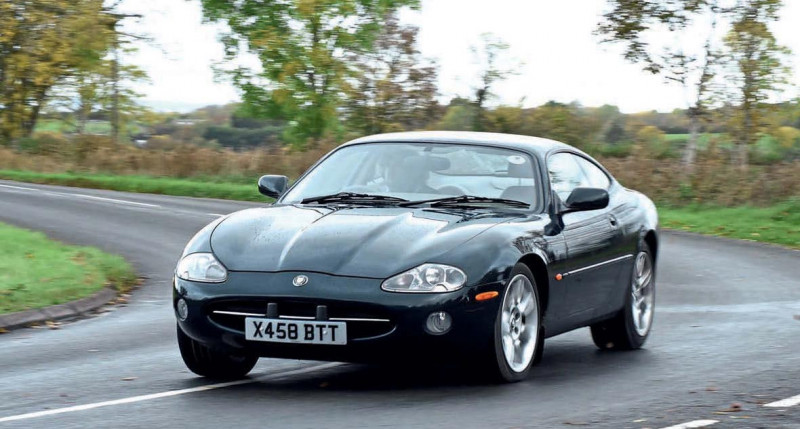
But Tom Walkinshaw – who jointly owned the satellite operation 50/50 with Jaguar – quietly suggested to Ford that if the car was rebranded as another of its recent acquisitions, Aston Martin, then it could be sold at a much higher cost. Ford naturally agreed and the DB7 was born, finally reaching production in 1993. This didn’t solve Jaguar’s problem of how to replace the XJ-S which by the early Nineties was extremely old fashioned. As Jaguar’s director of engineering, Jim Randle, admitted after the facelift was revealed, “It was withering on the vine.”

The short-term solution was to give the car a major, £50m update. Cosmetically, the changes included new rectangular-shaped rear lights with smoked lenses and reshaped side windows, while the front quarter lights were deleted and the doors became frameless. The side sills were flared, the radiator grille was made black, and a new chrome finisher ran the full width of the bonnet’s edge. Although the roof was flatter and the rear screen had a different rake, the famed buttresses remained. Inside, the car’s famous ‘tumbler’ style of secondary dials in the binnacle were replaced with more traditional gauges, while the burr walnut veneer was dropped in favour of elm. There were also new sports seats at the front and a new style of rear seat. The name changed slightly too, dropping the hyphen.

The majority of the modifications, though, were under the skin: of the car’s 490 panels, 180 were either new or retooled. The bodywork benefited from an improved manufacturing process by Venture Pressings, a new Telford-based company jointly owned by Jaguar and GKN.
But it wasn’t just the car that had an update since almost £4m was spent on Jaguar’s Castle Bromwich body plant, equipping it with the latest computer-controlled systems, and a further million was spent on Browns Lane’s track three where the XJS was produced.
Although the updates had a minimal impact on the car’s overall design, in terms of performance, build quality and image they gave the already old car a new lease of life. “The changes have made it look smarter from most angles,” and, “the new cabin is little short of a revelation,” were Autocar magazine’s findings after testing a 4.0-litre in the 1991.

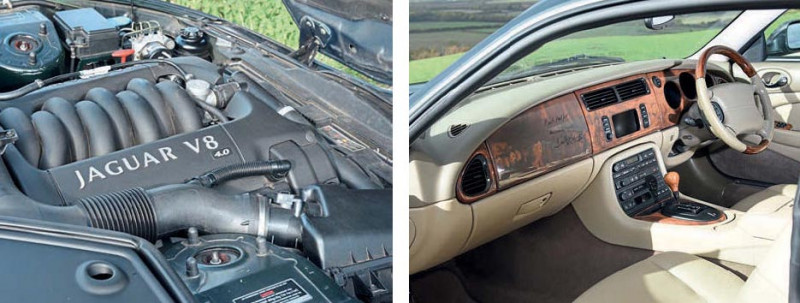
Another minor update followed in May 1993 that introduced new larger, colour coded bumpers plus an updated version of the 4.0 straight six – the AJ16 – while the 5.3 V12 was replaced by a new 6.0-litre. Despite being two decades old, these facelifts helped the car remain relatively popular with 5192 sold in 1993 and 6643 the following year. Even in 1995, its final full year of production, 5802 left the Browns Lane assembly line.
Jaguar’s offer that anyone who bought an XJS during the last few months of production and traded it in for the replacement would be offered a guaranteed 80 percent return no doubt helped with sales.
Not that the new car would any need help. As a brand new model with a fresh yet handsomely retrospective design plus modern engine, it was a fundamental reset of Jaguar’s sports car range and a worthy and successful replacement for the evergreen XJS.
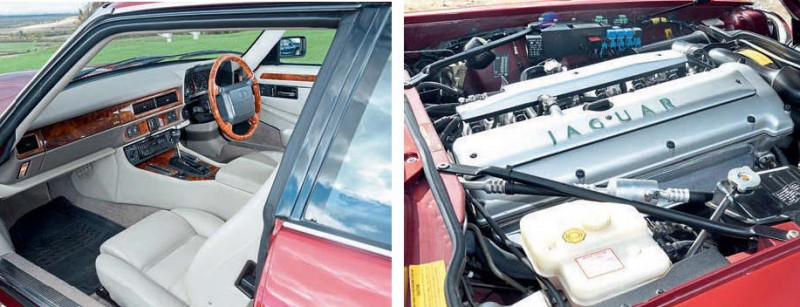
Work started on the new car – internally called the X100 – as soon as the facelifted XJS had been successful passed off for production in early 1991.
Although Jaguar’s designers had played around with giving the XJS a major facelift plus more radical approaches, they decided to go back to the company’s past instead.
“I’ve always felt very strongly about the heritage that [company founder] Sir William Lyons and [former aerodynamicist] Malcolm Sayer left Jaguar. It’s a powerful aspect of the equity of the company,” said former designer director, the late Geoff Lawson, to Car magazine in its April 1996 issue. “To discard it is a high risk strategy.” And so the design that was eventually chosen by the Ford executive in late 1992 was again by Keith Helfet who today makes no secret he was clearly influenced by the Malcolm Sayer designed D- and E-Types.
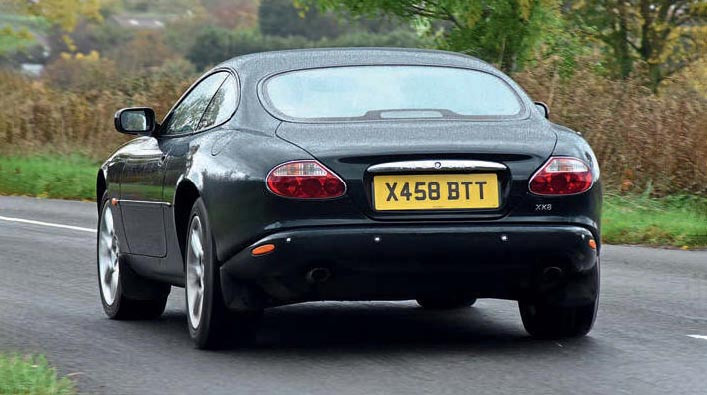
“After designing two other sports cars [XJ41 and XJ220] I knew exactly what I wanted to do,” said Keith in the March 2014 issue of JW. “In fact, the shape of the side windows was very similar to the XJ220’s” But due to the internal politics Keith knew (correctly as it turned out) would envelope Jaguar’s first sports car since the Seventies, he stepped away from taking the design through to production which fell to his colleague in the studio, Fergus Pollock. The result was a handsome, well balanced and distinctive car that with its tall haunches and oval grille was more associated with Jaguar’s past than the XJS ever had been. “The DNA of the family linage is readily traceable in the style of the car,” admitted Lawson in Car’s 1996 interview.
Yet it wasn’t just the car’s design that was all new. By the early Nineties and with the existing V12 now 20 years old and the origins of the straight six over ten, Jaguar needed a modern power unit. The engineers looked at several variations as the engine’s chief architect, David Szczupak, told Jaguar World Monthly in 1996. “We considered all types of alternative line-ups, from V10s and 4.0-litre V12s, flat eights and flat sixes, to straight-sixes and V6s. We gradually narrowed these down to a possible three engine range of V6, V8 and V12. AJ26 was the code name – the number was simply the addition of 6, 8 and 12.”
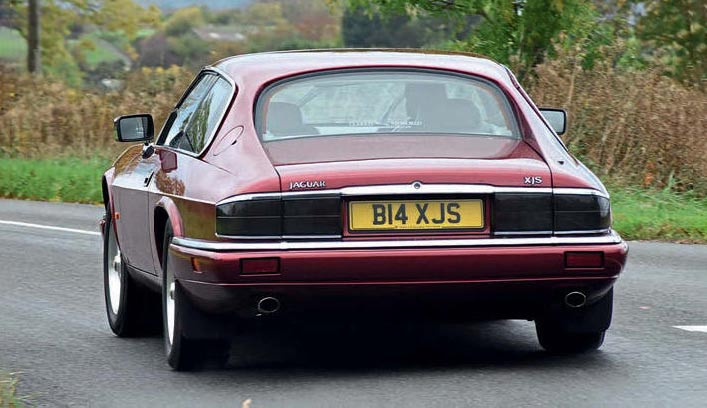
The V8 configuration was chosen because its compact nature compared with a straight-six or a V12 meant rigidity would be increased resulting in potentially better refinement. Plus, market research clearly revealed the majority of potential customers on both Europe and the US preferred a V8 to any other configuration.
The eventual all aluminium, 32v 4.0- litre unit was designed in-house but since Jaguar’s dedicated drivetrain factory inlocated on the outskirts of Coventry in Radford – the former Daimler plant – was considered out of date, the engine was instead produced at Ford’s engine plant located in Bridgend, South Wales. Unlike the XJS, there was never a manual option and the only gearbox available was a new version of the familiar 5HP five-speed automatic by German transmission specialist, ZF.
Other than reusing a small section of its predecessor’s floorplan, it would be Jaguar’s first all-new sports car since the XK120 in 1948. “To produce a new car that had a new engine and gearbox, was, even by industry standards, a brave thing to do,” said designer Fergus Pollock during an interview in our May 2017 issue. “Most companies will keep the engine or change the body or keep the body and change the engine. To do both was almost unheard of.” Although at £48,500 following its Geneva Motor Show debut in March 1996, the car was ten grand more than the outgoing XJS 4.0, it was also considerable cheaper than many of its rivals including the BMW 840i E31, Mercedes-Benz SL500 R129 and Porsche 911 Carrera 993.
Fast, handsome, and good value, little wonder the press was immediately impressed by the car. “It is seductive, nimble and very quick,” surmised What Car? magazine in its December 1996 issue. “Nothing remotely similar in price comes close.”
With a handsome convertible joining the coupe a few months later, the new car was immediately popular with 14,929 sold in 1997 alone. The supercharged XKR version from 1998 which pushed the power to 370bhp further extended its appeal while the 4.2-litre version of the V8 four years later kept it fresh.
As proof of the X100’s continuing popularity, whereas it had little in common with its predecessor, its own replacement – the Ian Callum-designed, all aluminium XK from 2005 – was a clear evolution of the car. What the final gestation of XJS and first generation XK8 do have in common, though, is that they’re both fast-appreciating classic Jaguars with similar values. Almost three decades after one replaced the other, which do we prefer today?
It’s here where I need to come clean and admit the Emerald Green XK8 parked next to the late Flamenco Red XJS is mine. But as a life-long enthusiast of the older car, I reckon I can still be impartial. Plus, when I bought my XK8 in 2016 I seriously considered an XJS, only choosing the V8 model since I thought it would be more reliable. The irony of that won’t be lost on regular readers who remember the many issues I’ve had with mine over the last seven years.
With its more conventional design, the XK8 is arguably the prettiest of the two but its long bonnet and surprisingly short cabin together with those famous buttresses gives XJS clearly more presence. But there’s no denying the shape is from another, distant age, though, meaning the plastic bumpers and modern alloys of this late 1995 example perhaps look as out of place as a new pair of Nikes would on my 81-year-old father.
What they do share are interiors with a similar ambience. After a faltering start, the XJ-S only really became popular when, together with the introduction of the AJ6 straight six, the post-modernist black vinyl of the early models was replaced in 1982 with more traditional veneer.
Due to this success, when the XK8 was being developed a decade later, Jaguar kept with the same recipe meaning there’s more shiny wood inside both cars than Blenheim Palace’s dining room.
But whereas the XJS dials are grouped together in an ordinary looking plastic binnacle, the XK8’s are inset behind three ‘portholes’ in the veneer that results in a simpler, cleaner, and arguably more elegant look.
Admittedly my car has now covered over 80,000 miles and this pristine 1995 XJS a mere 25,000 but I can’t help but think the older car’s interior looks better built, the quality of the plastics and the veneer a little thicker. With the XJS’s straight six producing 223bhp, almost 70 less than the XK8’s own 4.0, acceleration can best be described as sedate, reaching 60mph in a fairly lethargic eight seconds. Pressing the sport button on the gear lever surround helps a little, allowing the engine to rev harder until the four-speed ZF-sourced automatic gearbox changes up, but it never feels as fast as the XK8, the straight six never as eager to deliver its power as the V8.
Where the XJS really comes into its own is the suspension. Supple enough to absorb the worst of the poor, wintry conditions our roads have to offer yet still having a firmness to control body roll enabling me to take corners reasonably quickly. Yet its weight and the light, overly assisted steering means it’s never a true sports car. Despite the many updates and changes of engine the XJS had over the years, it’s clear the car ended as it started, as an old fashioned grand tourer.
As mentioned earlier, the XK8’s V8 is more responsive than the straight six meaning the acceleration isn’t just faster, but it’s sharper too. The newer five speed automatic gearbox no doubt helps here because when I squeeze the throttle, it has an eagerness to change down that the XJS’s four-speed unit lacks and so the resultant acceleration is just under two seconds faster. By being over 30kg heavier than the XJS, the XK8 is clearly not a sports car either but by having more accurate steering and even firmer suspension it’s happier to be thrown through corners than its predecessor. Yet it’s still supple enough to glide serenely other rough surfaces.
Putting one of these majestic cars ahead of the other is like trying to decide which of my two sons is my favourite. I can’t use their values as barometer, either, because although rough XK8s start as low as £4000 and perfect XJSs as high as £15,000, presentable examples of both are worth between seven and eight grand.
Ultimately, I reckon I still made the right choice in buying my XK8. Although I adore very early XJ-Ss with their simple black rubber bumpers, late, second facelifted models like this one with their awkward modern additions don’t work as well aesthetically for me.
Not only do I think the X100-generation of XK is still one of the prettiest cars in the world, but the more responsive V8 and faster five-speed box makes it better to drive than the XJS 4.0, especially regularly. But even I can see, as much as the late XJS and early XK8 are like chalk and cheese, by being part of the same lineage of classic Jaguars, the desirability of both remains the same.
Thanks to: Owner of the XJS 4.0 featured here, Ian Collier
TECHNICAL DATA 2000 Jaguar XK8 X100
- Engine 3996cc V8
- Max Power 290bhp
- Max Torque 290lb.ft
- 0-60mph 6.4 secs
- Max speed 155mph
- Transmission 5-spd auto
- Weight 1649kg
TECHNICAL DATA 1995 Jaguar XJS 4.0
- Engine 3980cc inline 6
- Max Power 223bhp
- Max Torque 278lb.ft
- 0-60mph 8.2 secs
- Max speed 143mph
- Transmission 4-spd auto
- Weight 1612kg


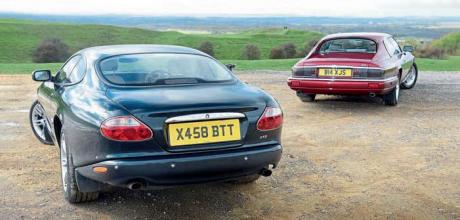
The Jaguar XJ-S/XJ-S is a luxury grand tourer produced by Jaguar Cars from 1975 to 1996. Here is a brief history of the XJS: